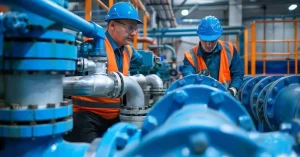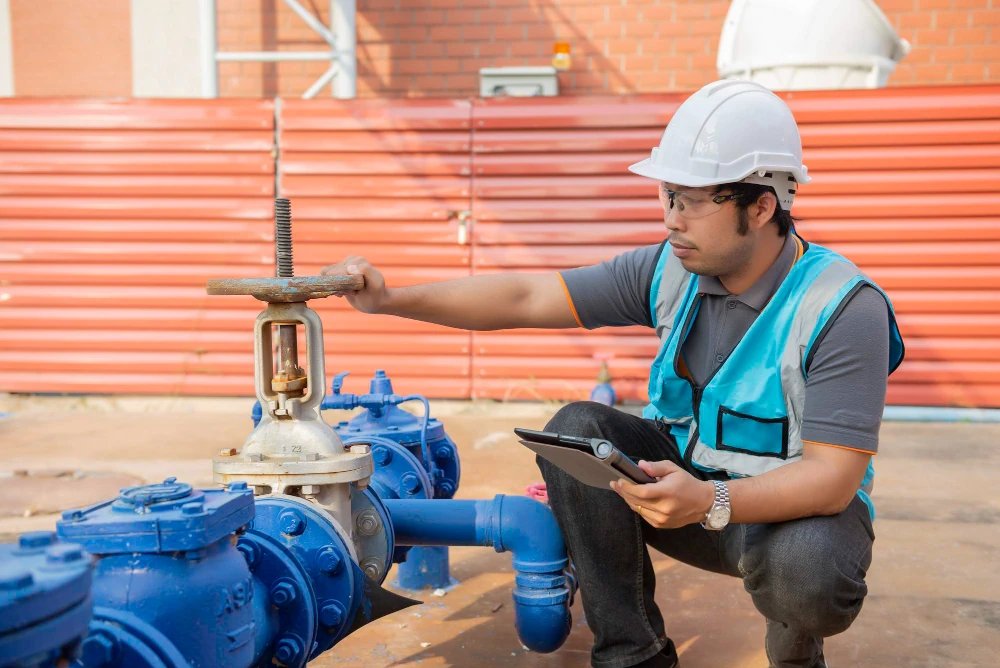In industrial equipment maintenance, pump maintenance best practices are crucial for ensuring efficiency and longevity. Adhering to these best practices, such as focusing on lubrication, early fault detection, and preventive maintenance, ensures reliable pump operation through continuous use challenges. By implementing a robust maintenance routine, you can enhance operational performance and extend equipment lifespan. Exploring these strategies leads to sustained reliability and longevity with precision and foresight.
Key Takeaways
- Regular inspections to identify issues early.
- Proper lubrication techniques for reduced wear.
- Address wear and tear promptly.
- Implement preventive maintenance schedules.
- Monitor for leaks, unusual noises, and vibrations.
Common Pump Maintenance Mistakes
Identifying and rectifying common pump maintenance mistakes is imperative for ensuring best pump performance and longevity in industrial settings. Overlooking proper lubrication schedules, neglecting to monitor for leaks, and failing to address unusual noises promptly can lead to costly repairs and downtime. Regular training on maintenance protocols, implementing preventive maintenance schedules, and conducting thorough inspections are key steps in avoiding these common pitfalls.
Importance of Regular Inspections
To maintain peak pump performance and prevent costly repairs, regular inspections play a critical role in industrial settings. These inspections involve thorough examinations of key components such as seals, bearings, and motor alignment. By identifying potential issues early on, maintenance teams can address them proactively, reducing the risk of unexpected downtime and extending the overall lifespan of the pump equipment. Regular inspections are essential for ensuring reliability and longevity.
Implementing Proper Lubrication Techniques
Effective pump maintenance hinges greatly on implementing accurate lubrication techniques that are tailored to the specific requirements of the equipment. Proper lubrication reduces friction, heat, and wear within the pump components, extending their lifespan and ensuring best performance. It is important to select the correct lubricant type and application method, following manufacturer recommendations diligently. Regularly monitoring lubrication levels and conditions is essential for preventing breakdowns and costly repairs.
Addressing Wear and Tear Issues Early
Regularly monitoring pump components for signs of wear and tear is essential in maintaining peak performance and preventing potential system failures.
- Check for abnormal vibrations or noises
- Inspect for leaks or corrosion
- Monitor temperature fluctuations
- Examine seals and gaskets for deterioration
- Keep track of any changes in performance levels
Extending Pump Lifespan With Preventive Maintenance
Monitoring wear and tear issues early on can greatly contribute to extending the lifespan of pumps through preventive maintenance measures. Regularly scheduled inspections, lubrication, alignment checks, and vibration analysis are vital components of preventive maintenance. By proactively identifying and addressing potential problems before they escalate, pump reliability and longevity can be markedly enhanced, reducing downtime and overall maintenance costs for the system.

Frequently Asked Questions
Can Pump Maintenance Be Automated for Efficiency?
Automating pump maintenance can boost efficiency by streamlining routine tasks, reducing human error, and enabling real-time monitoring for proactive interventions. Leveraging technology like IoT sensors and predictive analytics can optimize maintenance schedules and minimize downtime.
How Often Should Pump Vibration Levels Be Monitored?
Monitoring pump vibration levels is essential for early detection of potential issues. Industry standards recommend regular monitoring, typically on a monthly or quarterly basis. However, high-risk environments may require more frequent checks to guarantee peak pump performance and longevity.
What Are the Benefits of Using Condition Monitoring Technologies?
Condition monitoring technologies offer real-time insights into pump health, enabling predictive maintenance, reducing downtime, and extending equipment lifespan. By detecting issues early, these tools optimize performance, enhance reliability, and minimize costly repairs.
Is It Necessary to Have Spare Parts on Hand for Emergency Repairs?
Maintaining spare parts for emergency repairs is essential for minimizing downtime and ensuring continuous operation. By having critical components readily available, maintenance teams can swiftly address unexpected issues, reducing costly disruptions and maximizing pump reliability.
What Role Does Water Quality Play in Pump Maintenance?
Water quality is essential in pump maintenance as contaminants can lead to corrosion, wear, and decreased efficiency. Monitoring pH levels, sediment buildup, and ensuring proper filtration are key steps in maintaining peak pump performance and longevity.
Conclusion
To sum up, adherence to pump maintenance best practices, such as regular inspections, proper lubrication techniques, and proactive addressing of wear and tear issues, is essential for ensuring pump reliability and longevity. By implementing preventive maintenance schedules and addressing potential issues early on, the overall lifespan of pump equipment can be greatly extended. These practices are vital for minimizing downtime, reducing repair costs, and maintaining peak performance of pump systems.
You May Also Like To Read:

